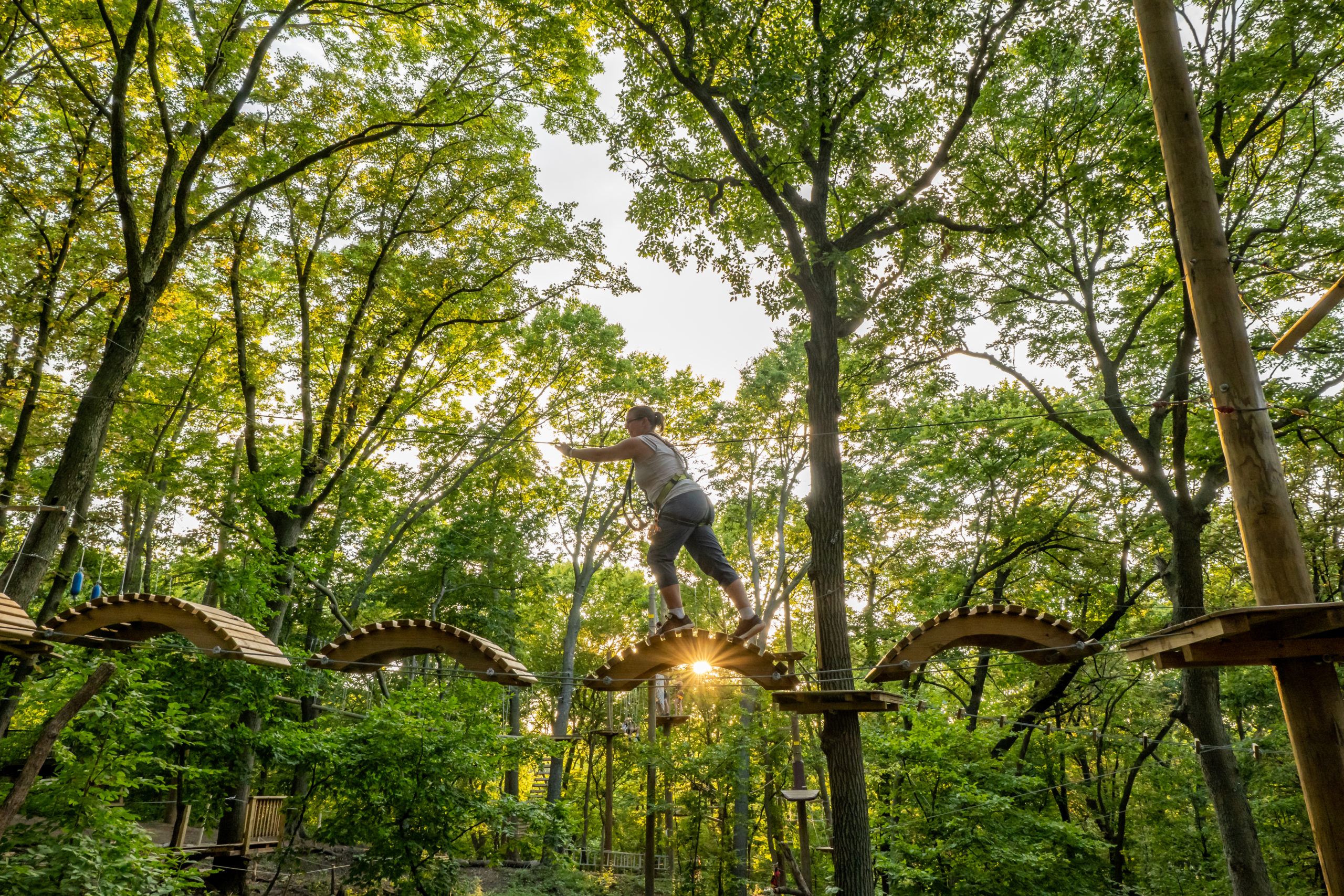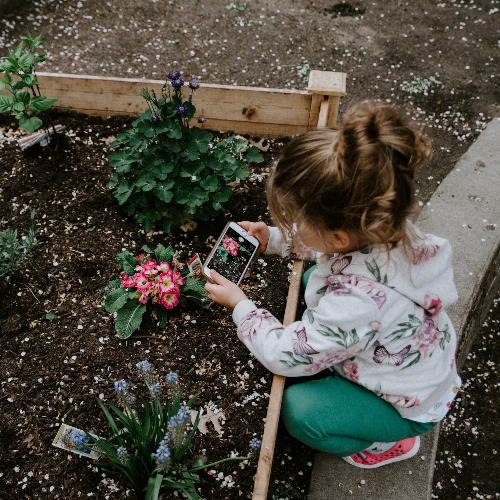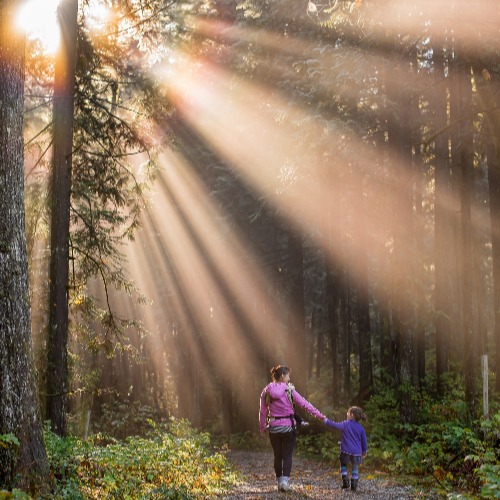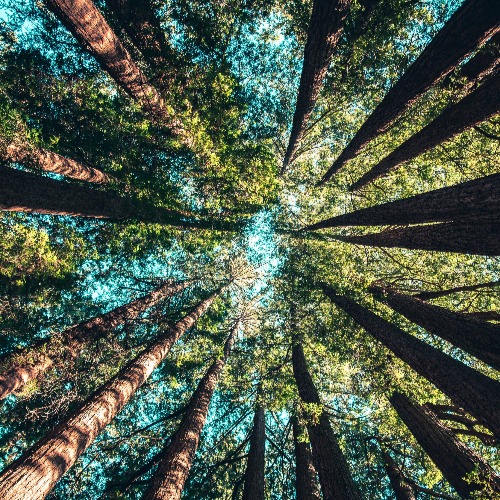
Celebrate Earth Day Every Day

Today marks the 50th anniversary of Earth Day, a day that calls us to remember we are stewards of a planet requiring our attention and commitment. In the past, large-scale demonstrations drew attention to government regulations and personal actions required to preserve our planet for future generations. This year, because of the coronavirus pandemic, we can watch live-streamed videos of world wide celebrations. However, we also can bring this big movement home. This year, celebrate Earth Day every day in your backyard or neighborhood with kid-friendly outdoor activities that instill love and commitment to our earth.
Families can make every day “Earth Day” in many ways. You can soak in nature’s abundance or take one tiny corner of the world and make it a better place. You also can build something for nature’s critters. We’ve got a few suggestions.
Soak in nature’s abundance
- Neighborhood scavenger hunt. It’s spring when signs of new beginnings abound. Brainstorm over breakfast to create a “Signs of Spring” list. When it’s spring, what do you see, hear, feel, smell? (Some answers: fungus, robins, eggs, leafy shadows on the lawn, tweets of birds during the dawn chorus, the cool smoothness of a lacy blossom, the smell of fresh earth…) Then, get outside and find these things. if coming up with your own list feels too ambitious, check out this list from Lauritzen Gardens.
- I Spy – iNaturalist. Everything in nature has a name and that’s easy to forget. Download the iNaturalist app to your smartphone or tablet and take a walk. Snap pictures of nature during your stroll and upload them into the iNaturalist app to learn the names of those things that caught your eye. Notice the leaves of plants are different. The bark of one tree differs from that of another. Search for the unique. With iNaturalist, you also can become a citizen scientist. The website offers several project suggestions.
- Hula-Hoop Micro-Journey. Get up close and personal with nature. Toss a hula-hoop into your backyard to mark a micro-environment. Then, look closely. What signs of life do you see? How many different types of plants do you see? What is the soil’s texture? Then, toss the hoop to another area of your yard. How is the new area similar to the last? How is it different?
Make a corner of the earth a better place
- Plant something beautiful, productive, or both. Many garden shops are open and some offer curbside pick-up or delivery. Consider landscaping with native plants, creating a hanging strawberry “patch,” or making a container garden. Get started on building a raised bed with vegetables you’ll enjoy eating this summer. Discover ideas from Campbells Nursery and find plants that thrive in the Midwest environment including annuals, perennials, roses, shrubs and trees at Moore’s landscaping & Nursery.
- Keep it simple and pick up litter while on a walk. Sometimes the smallest things make the biggest difference. Plan a walk or hike and pack a bag so you can collect trash as you trek. Make it a contest to add some fun. Might we suggest walking at Fontenelle Forest or Neal Woods? (Check out our recent blog about a Fontenelle Forest History Hike.)
Build something for nature’s critters
- Make a bird feeder. Feed our feathered friends and reuse stuff you might otherwise toss. That’s two great ways to be earth-friendly! If you are industrious, check out building plans to turn scrap lumber into a beautiful bird feeder by clicking here. Or get a little crafty and use household materials. Happy Hooligans suggests 32 ways to throw a picnic for wildlife in your own backyard using things like toilet paper rolls, pinecones, string, paper plates and even stale bagels.
- Build a worm farm. Pick up a couple dark 10-gallon plastic bins and a package of Red Wigglers from a bait shop to give your kids a chance to see the life cycle in action. Find step-by-step directions for turning kitchen scraps into fertilizer by clicking here. You may want to impress your kids with a few facts about worms. These wiggly creatures breathe through their skin! Also, they eat more than one-third of their body weight each day. Furthermore, worm poo is actually called a cast – garden stores sell it as fertilizer. So, these guys will make the stuff to help your garden grow!
 Share the history Earth Day with kids
Share the history Earth Day with kids
Doing any of the above activities with kids provides a context for telling the story of Earth Day. They may be surprised that a half century ago Americans drove gas-guzzling cars that burned through gas like… Well, like a worm burns through kitchen scraps! Back then, factories pumped out smoke and sludge unchecked by federal or state regulations.
Because there were no regulations, smog made breathing difficult in large cities. Environmental disasters also shocked Americans into realizing change was necessary. For example, a 1969 oil spill in Santa Barbara, CA dumped 80,000 to 100,000 barrels of oil on the coast of Southern California, killing birds and marine animals such as dolphins, elephant seals and sea lions. Later that year, residents of Cleveland, Ohio watched the Cuyahoga River burn. It had been polluted for years by industrial waste.
As a result of these disasters, U.S. Senator Gaylord Nelson of Wisconsin had an epiphany: Why not address widespread public concern over pollution by using the strategies of anti-war protestors to harness a collective drive and determination to improve the environment? Because of Nelson, Earth Day was first recognized on April 22, 1970. By the end of that year, President Richard M. Nixon – a conservative Republican – had set aside his initial skepticism and created the U.S. Environmental Protection Agency.
Earth Day Goes Global
Twenty years after the first Earth Day in the United States, a group of environmental leaders recognized the need for a world wide focus on environmental protection. They approached Denis Hayes, who worked with Nelson and coordinated our country’s Earth Day demonstrations. With Hayes’ leadership, Earth Day 1990 mobilized 200 million people in 141 countries. The event galvanized efforts for creating recycling strategies and resulted in the United Nations Environmental Summit held in Rio de Janeiro in 1992.
For his role in raising environmental consciousness, Nelson received the Presidential Medal of Freedom in 1995. During a speech he delivered that year, Nelson kept his eyes fixed on the future.
Nelson said, “The opportunity for a gradual but complete break with our destructive environmental history and a new beginning is at hand…. We can measure up to the challenge if we have the will to do so — that is the only question. I am optimistic that this generation will have the foresight and the will to begin the task of forging a sustainable society.”
Connect your Earth Day to the big picture
This year, create an Earth Day memory for your child. Use this experience as a foundation for developing or enhancing a commitment to environmental stewardship. If your child is ready, introduce him or her to the virtual celebrations of Earth Day and to global concerns about the impact of climate change on our future. With your child, identify conservation organizations your family can support in our world and right here, in our community.
Gardening with Phone Photo by Kelly Sikkema on Unsplash
View into Trees Photo by Casey Horner on Unsplash
Walking in the Forest Photo by James Wheeler on Unsplash

